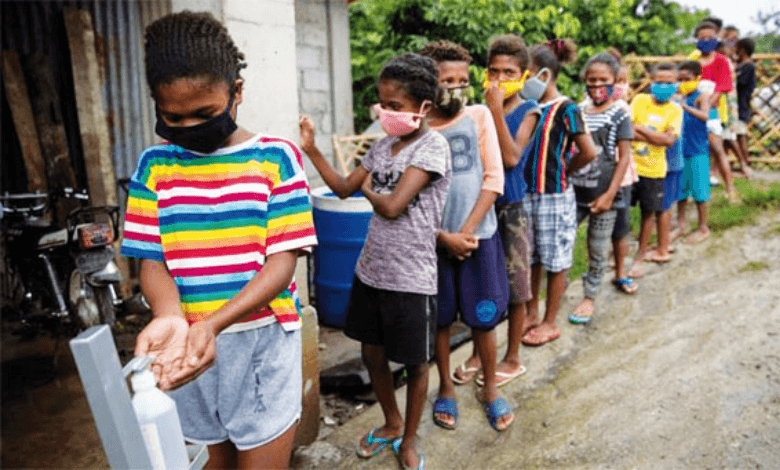Filipino Youth Face Alarming Climate Risks, Says UNICEF Report

Launched on the third anniversary of the impassioned global youth climate strike movement, this groundbreaking report shatters conventional wisdom. For the first time, it scrutinizes climate risk through the innocent eyes of children, revealing an alarming truth.
The Philippines, an archipelago nestled in the midst of nature’s extremes, bears the weight of a ranking that sends chills down our collective spine – 31st out of 33 “extremely high-risk” countries.
Here, amidst emerald waters and swaying palms, Filipino children are confronted daily with the ferocity of Mother Nature. Coastal floods and tropical cyclones are their harsh teachers. But their resilience shines brighter than any storm.
“The climate crisis is a child’s rights crisis,” declares UNICEF Philippines Representative Oyunsaikhan Dendevnorov, his voice unwavering.
“Filipino children live on the frontlines of adversity, but we possess the power to rewrite this narrative. By investing in the lifeblood services they cherish – clean water, healthcare, education – we become their shield against a changing climate and a deteriorating world.”
What does the report say
This report’s revelations run deep, exposing an unsettling disconnect. The nations most ravaged by climate-driven nightmares contribute the least to the problem.
The 33 “extremely high-risk” countries share a mere 9 percent of the world’s CO2 emissions. In contrast, the top 10 emitters, heavyweights of pollution, shoulder nearly 70 percent of the blame. Astonishingly, only one of these climate culprits faces an “extremely high-risk” designation.
“The environmental turmoil, sparked by a few, engulfs the lives of many,” Oyunsaikhan reflects somberly.
Children, the report underscores, bear the harshest brunt. Their vulnerability, a testament to their unique needs, lays bare a profound truth.
They hunger for more sustenance and thirst for more water, proportionate to their tender frames. They are ill-prepared for nature’s fury, succumbing to extreme weather, toxins, and diseases with ease.
So, how can we alter the course of this impending “extremely high risk of climate change,” threatening the very essence of childhood?
UNICEF, joined by allies, lays out a roadmap:
- Bolster Climate Resilience: Critical services like water, sanitation, healthcare, and education must fortify themselves against the onslaught of climate change to safeguard the young.
- Empower Through Education: Arm children with climate knowledge and green skills, arming them to face the climate’s wrath with courage and intelligence.
- Youth at the Helm: Children and young people deserve a seat at the table, a voice in decisions that shape their destiny, from local councils to global climate summits.
- A Green Rebirth: As we emerge from the shadow of the pandemic, our recovery must be a beacon of green hope, preserving the potential of generations yet unborn.
ALSO READ : Did You Know? This Dirt Can Help Against Climate Change
In a nation where children already grapple with malnutrition’s cruel grip, the burden of climate change bears heavily on their small shoulders.
The Philippines, perched on the Pacific Ring of Fire and embraced by the typhoon belt, faces a daunting challenge. It is a race against time, a battle to secure the future of the very souls who will inherit this fragile world.



